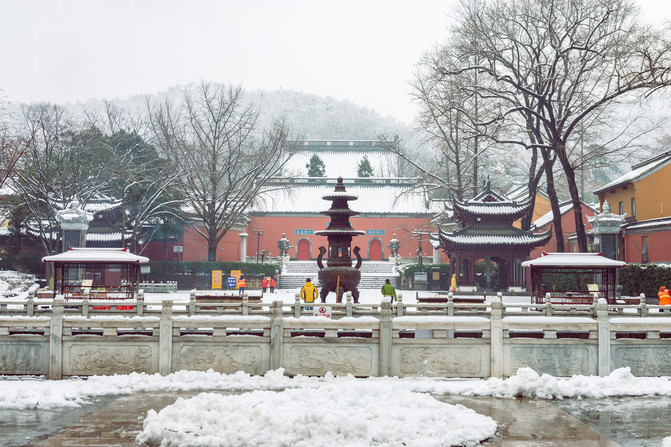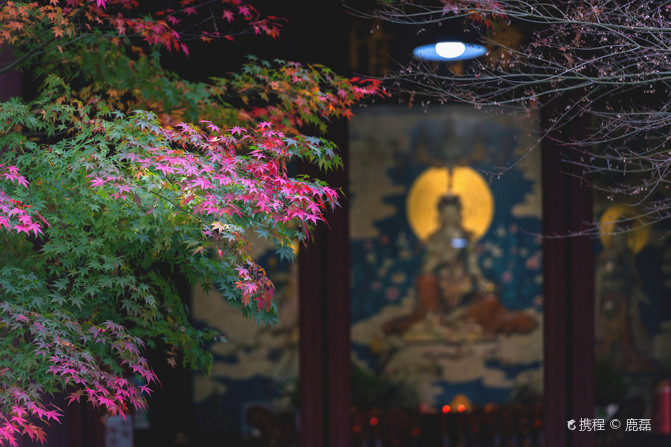One of the four major ancient temples in China: Qixia Temple in Nanjing
Qixia Temple is located in Qixia Mountain Scenic Area in Qixia District, Nanjing City. It is surrounded by mountains on three sides and faces the Yangtze River in the north. It is one of the four famous temples in China. It is the birthplace of the "Three Lunsects" of Buddhism. It was the center of Buddhism in China during the Northern and Southern Dynasties. It was on the same footing as Jiming Temple and Dingshan Temple during the Southern Dynasties. In April 1983, Qixia Temple was identified as a national key Buddhist temple in Han nationality areas, and the Qixia Mountain Branch of the Chinese Buddhist Academy was established in the same year. In January 1988, it was listed as a national key cultural relic protection unit. Qixia Temple was built in the seventh year of Yongming in the Southern Qi Dynasty (489). Liang Senglang made great contributions to the teachings here and was known as the first ancestor of the Three Lun Sects in Jiangnan. Yang Jian, Emperor Wen of the Sui Dynasty, built a stupa in the 83 prefectures. His edict for establishing the stupa was headed by Qixia Temple in Jiangzhou.
The above content is the official introduction of Qixia Temple. I think I should have a say in this place because I have come here too many times. First of all, we must make it clear that tickets are 40 in the peak season and 20 in the off-season. Autumn is coming soon and the Maple Leaf Festival in Qixia Mountain is about to open, and the price will definitely belong to the peak season. But tickets are not required before 7 a.m. every day, so comrades who are convenient can not spend the ticket money. In terms of transportation, take Nanjing Metro Line 2 and get off at Yangshan Park Station. There is a bus that goes directly to Qixia Mountain Scenic Area. The bus company has specially added the line. Let's see the picture above. Because I come here often, the photos are available in various seasons.

This is a small square in front of Qixia Temple. I didn't take pictures of the gate of the scenic area. From a photographic perspective, I don't think it is beautiful enough and there are traces of maintenance work. Many people burn incense and pray every day here.

Perspective from the opposite direction of the square.

Taking pictures of the wall next to the entrance of Qixia Temple, I think this composition can give us the connotation of the temple and Buddhism.

Qixia Temple is AAAA. There are many monks here, including laymen at home and monks who have become monks. The incense is very popular and large-scale Buddhist activities are often held.

Of course, there are also many beggars in places like this. It's hard to say whether it's real or not, but it just feels really pitiful to look at it.

This picture should be taken inside the Drum Tower. When the maple leaves are red, it is really worth visiting.

An eminent monk at Qixia Temple. I accidentally photographed this eminent monk. I am really lucky. A stumbling monk must have a very deep understanding of Buddha and be extremely pious.

Seeing his figure, I seemed to have a lot of thoughts.



Let's take a few pictures of maple leaves. The maple leaves here seem to be red. It's really red all over the mountains and the forests are dyed.

This one is in winter, after the heavy snow.

Pavilion in the release pool.

There are lotuses everywhere. In Buddhism, lotus is believed to be Buddha and Buddha is lotus.

Guess they should be apprentices or "colleagues".

Among my personal works, one of my favorite photos. This photo and the sentence "Entering the ancient temple in the early morning, and the high forest in the early morning" in the poem "Inscribed to Break the Mountain Temple and Behind the Zen Temple" are particularly appropriate.
Let's write so much first, get ready for work. If you have any questions, you can leave a message and answer them one by one. In short, there are beautiful things to share with everyone.
Thank you for your attention!
Previous Article:Nanjing Presidential Palace, a classical garden with Jiangnan characteristics
Next Article:Top of the city, choice for taste| The Ritz-Carlton, Nanjing
